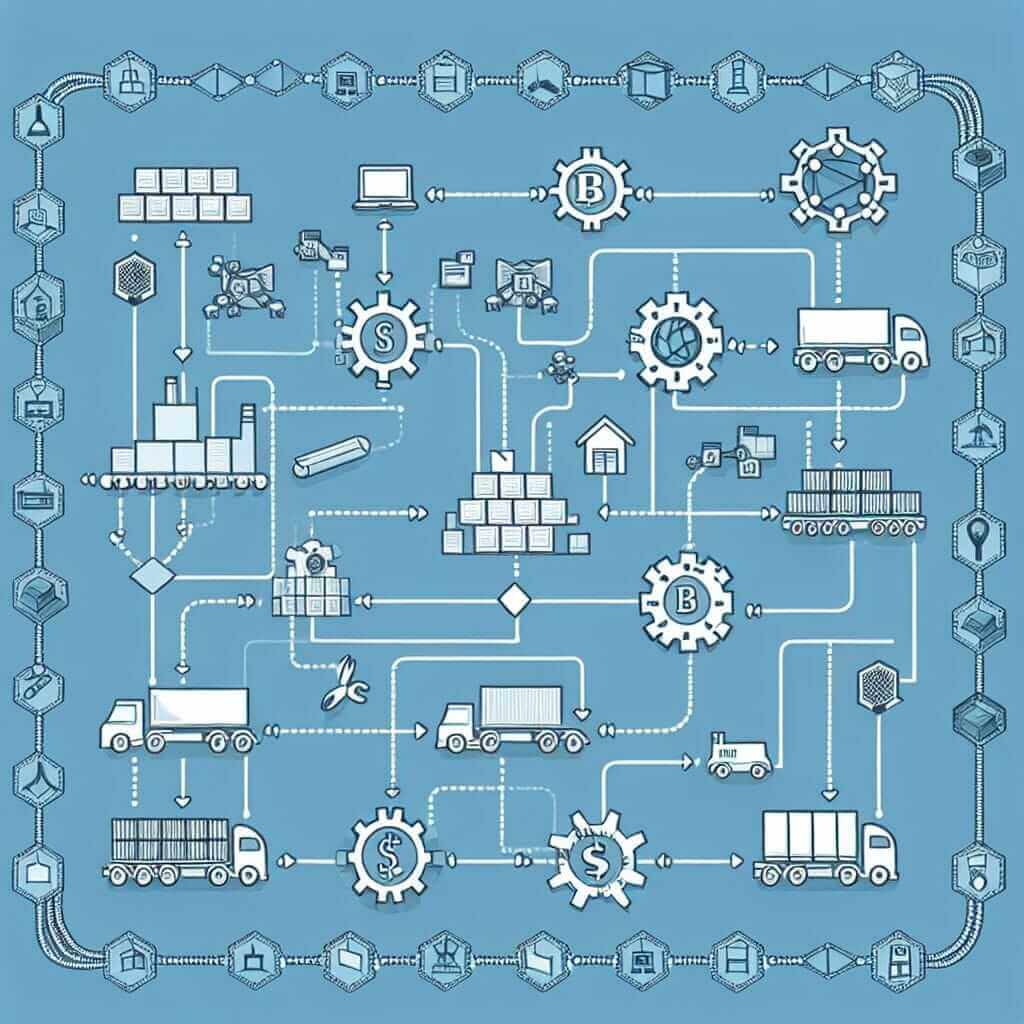In preparing for the IELTS Reading test, it’s beneficial to practice with contemporary topics such as “How is blockchain technology influencing global supply chain efficiency?” Not only does this subject matter reflect current trends, but it also aligns with frequent test themes focused on technology and economy. Understanding the impact of blockchain on global supply chains can make your study sessions more relevant and insightful, giving an edge in your IELTS preparation.
Nội dung bài viết
Reading Passage & Questions
To help you practice, here is an IELTS-style reading passage on the given topic, complete with questions to test comprehension. This passage is designed to mimic those found in the actual IELTS test and follows the format of Medium Text.
Reading Passage
How Blockchain Technology is Revolutionizing Global Supply Chains
Blockchain technology, initially designed as the underlying structure for cryptocurrencies, has found groundbreaking applications in enhancing the efficiency and transparency of global supply chains. By recording each transaction on a tamper-evident, distributed ledger, blockchain can provide an unprecedented level of transparency and trust in supply chains worldwide.
Traditional supply chains often struggle with issues of inefficiency, fraud, and opacity. These challenges arise due to the fragmented nature of supply networks, where multiple entities are involved in the production and distribution of goods. Each entity maintains its own separate records, making it difficult to trace products back to their origin. Blockchain addresses these issues by maintaining a single, immutable record accessible to all participants in the supply chain.

One of the most significant benefits of blockchain in supply chains is increased traceability. When products are tagged with unique identifiers, such as QR codes or RFID tags, their journey from origin to consumer can be logged on the blockchain ledger. This comprehensive tracking capability means that any product defect or contamination can be swiftly identified and addressed. For example, in the food industry, this can prevent large-scale outbreaks of illness by enabling quick, targeted recalls.
Furthermore, blockchain enhances efficiency by automating many of the processes traditionally handled manually. Smart contracts, which are self-executing contracts with the terms directly written into code, can automate transactions and ensure that all conditions are met before payments are processed. This minimizes errors and delays commonly associated with manual processing.
However, the implementation of blockchain technology is not without its challenges. High costs and the need for technical expertise are significant barriers to widespread adoption. Additionally, standardizing blockchain protocols across different industries and regulatory environments remains an ongoing challenge. Despite these hurdles, the potential benefits of blockchain for improving global supply chain efficiency make it a promising technology for the future.
Questions
Matching Headings
Choose the correct heading for each paragraph (I-V) from the list of headings below:
- Increased transparency and trust
- Challenges in implementing blockchain
- Enhancing product traceability
- Introduction to blockchain technology
- Automating processes with smart contracts
markdown
I
II
III
IV
V ____
True/False/Not Given
Do the following statements agree with the information given in the text? Write True, False, or Not Given.
- Blockchain technology was originally intended for use in supply chains.
- Blockchain makes it easier to trace goods back to their origin.
- Blockchain technology fully eliminates errors in supply chains.
- High costs are a barrier to the adoption of blockchain technology.
- Standardizing blockchain protocols is no longer a challenge.
Summary Completion
Complete the summary using the list of words below.
(Transparency, QR, tracking, delays, products, payments)
Blockchain provides greater (1) by maintaining a single, immutable record accessible to all participants. Products are tagged with unique identifiers like (2) or RFID, allowing detailed (3) of their journey. This technology can reduce errors and (4) through automation with smart contracts.
Answers
Matching Headings
- I – 4. Introduction to blockchain technology
- II – 1. Increased transparency and trust
- III – 3. Enhancing product traceability
- IV – 5. Automating processes with smart contracts
- V – 2. Challenges in implementing blockchain
True/False/Not Given
- False
- True
- False
- True
- False
Summary Completion
- Transparency
- QR
- Tracking
- Delays
Common Mistakes to Avoid
When practicing with passages like the one above, students often:
- Skim and Scan Inefficiently: Instead of thoroughly reading, remember to practice skimming for main ideas and scanning for specific information.
- Misinterpret True/False/Not Given Questions: Ensure you understand the statement’s details compared to the text.
- Struggle with Matching Headings: Stay focused on the main idea of each paragraph rather than getting lost in details.
Vocabulary
- Tamper-evident (adj): A feature that makes unauthorized access to the product noticeable.
- Distributed Ledger (n): A decentralized database that is coordinated and maintained by multiple participants.
- Traceability (n): Ability to verify the history, location, or use of an item by documented information.
- Smart Contracts (n): Contracts that are executed automatically through blockchain technology.
Grammar Points
- Conditional Sentences: Understanding the use of if-clauses is crucial, especially when discussing potential scenarios or predicting outcomes.
- Example: If blockchain technology is implemented, global supply chains will become more efficient.
Conclusion
To excel in the IELTS Reading test, practicing with realistic reading passages such as “How is blockchain technology influencing global supply chain efficiency?” can make a significant difference. By focusing on understanding the content, avoiding common mistakes, and expanding your vocabulary and grammar knowledge, you’ll be better equipped to tackle the IELTS Reading section confidently. Happy studying!